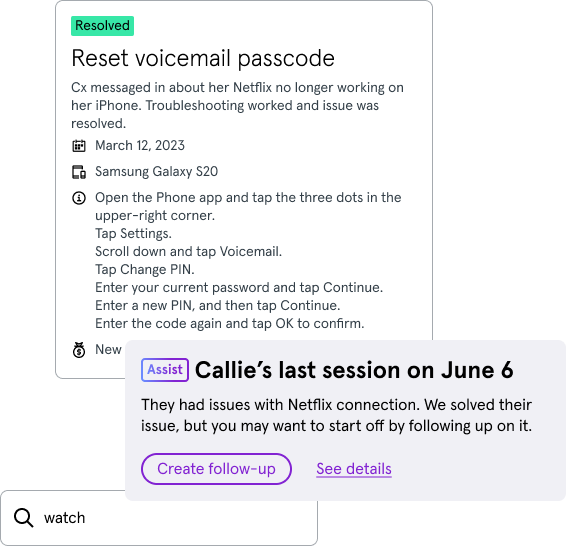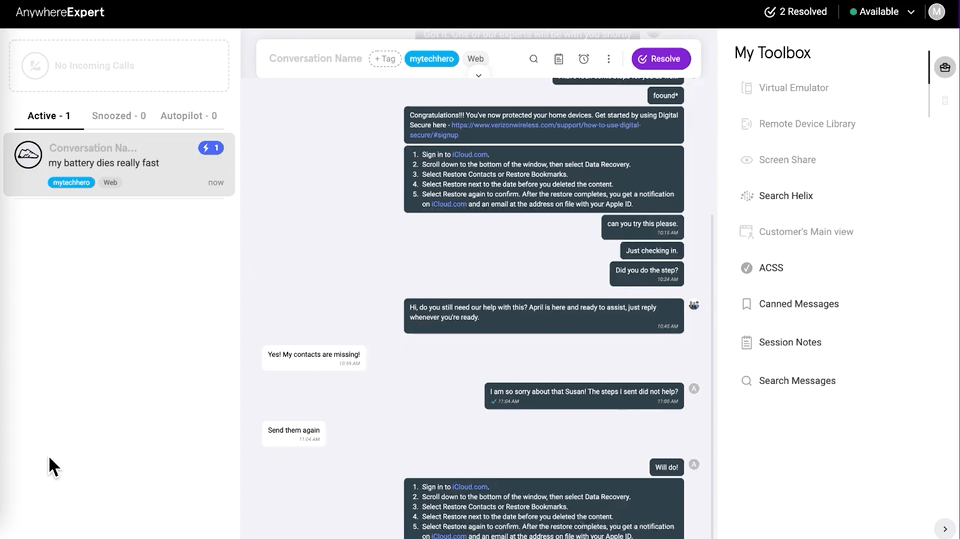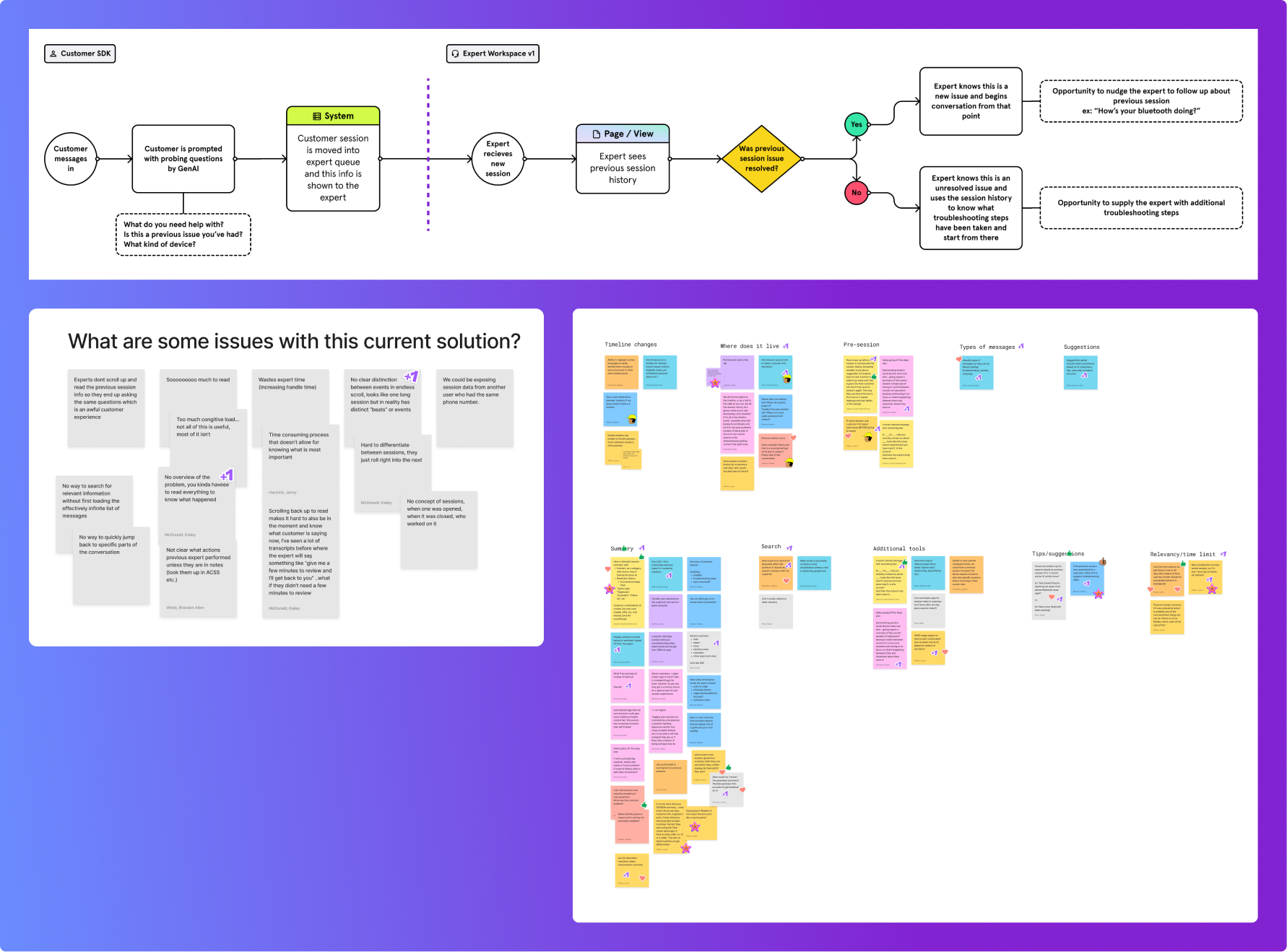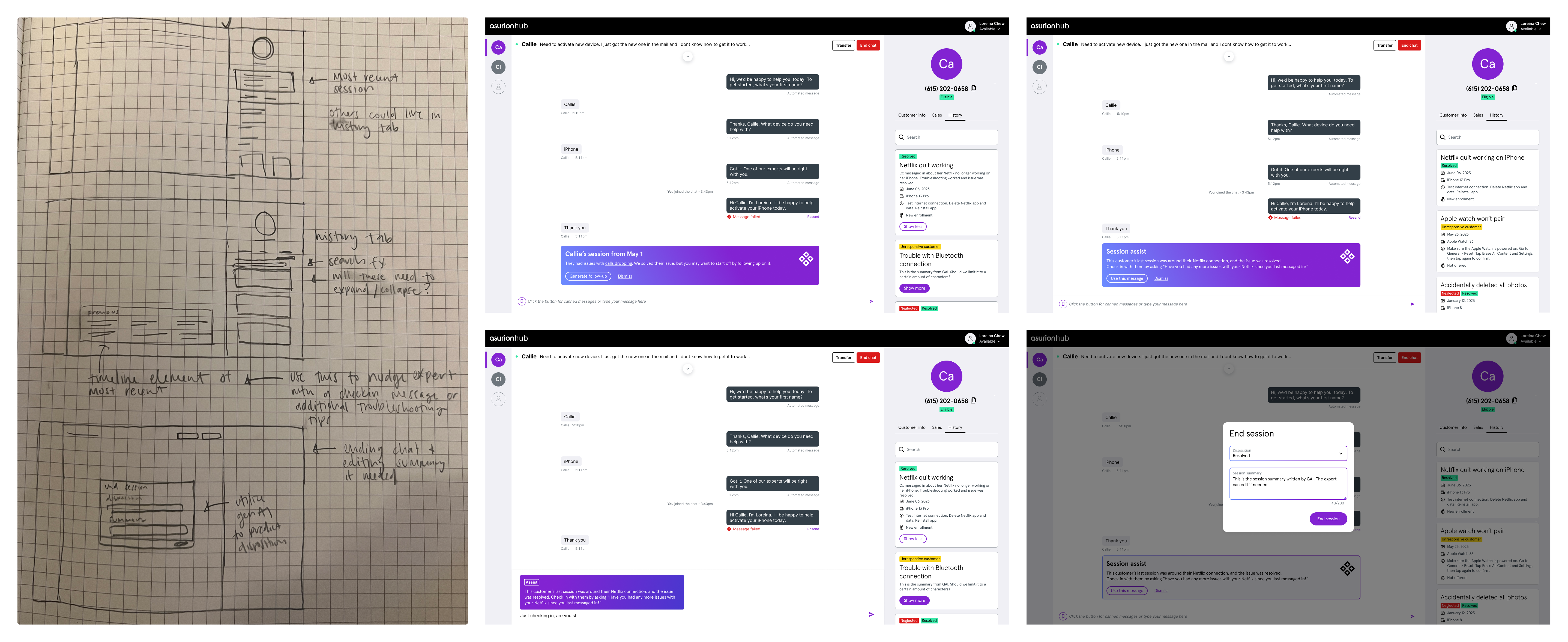
PROBLEM
Asurion's frontline employees, referred to as 'experts,' engage with millions of customers annually through the Asurion Hub messaging platform, providing essential tech support. A significant portion of these customers, approximately 20%, have multiple chat sessions over time. To ensure efficient problem resolution, experts needed a streamlined process for reviewing past sessions, regardless of when they occurred.
SOLUTION
By utilizing the capabilities of generative AI, Asurion's experts can be provided with the relevant information they need, when they need it. This significantly improved the workflow for the experts and enhanced the overall user experience for Asurion's customers. As the lead designer, I played a key role in shaping the user interface and ensuring that the AI integration was intuitive and effective in meeting the needs of both experts and customers.
OPPORTUNITY
Introducing a contextual session summary reduces Average Handle Time (AHT), saving costs for the business. Experts could handle more sessions with efficiency, boosting productivity. Additionally, this enhancement would not only benefits the experts' earnings, as they are compensated per session and based on their CXP ratings, but also boosts overall customer satisfaction.
In the previous messaging platform, experts faced challenges while reviewing a customer's prior conversations. My initial research and discovery revealed that past messages were not effectively utilized by experts. The absence of clear session distinctions and the need to scroll through an endless timeline resulted in repetitive questioning, negatively affecting the customer experience. When the team and I began discussing the possibility of incorporating a session history feature in the new messaging platform, I was excited about the opportunity to explore and revamp the approach. Our aim was to provide a more efficient solution that would significantly enhance the customer and expert experience.

I analyzed and mapped out the user flow for both customers and experts, establishing a foundation for the design process. To foster collaboration, I facilitated a brainstorming session with key stakeholders from product, engineering, and UX content. Together, we addressed the major issues seen in the old messaging platform and generated innovative ideas for improvement. This cross-functional collaboration greatly contributed to team alignment as we progressed through the design and development stages. Key outcomes from the session included leveraging generative AI, eliminating the endless scroll, implementing a search functionality, providing additional context, limiting the history window, and introducing follow-up messages for experts.

I partnered closely with the UX content team to evaluate the capabilities of generative AI in producing the necessary information for experts based on various prompts. To gain stronger buy-in from the team, I conducted an initial experiment by inputting an old chat transcript into ChatGPT. I prompted the model to generate both a summary and a follow-up message for the next expert, as required. This experiment served as a quick and effective way to demonstrate the potential of generative AI and gather support from the team.

Before diving into explorations and wireframes in Figma, I started by sketching out initial ideas. These concepts were guided by the major capabilities the team and I had identified through collaborative brainstorming, considering both the team's insights and the capabilities of the model.

Following the wireframes, I designed a high-fidelity prototype and presented it to experts. The feedback was overwhelmingly positive, particularly regarding the session summary feature, which they believed would save time in their workflow. Through discussions, I gathered valuable insights and addressed their questions on context. This input led to refinements in the prototype, ensuring it met the experts' needs and maximized the AI-generated information.
After gathering insights from the experts and refining the designs, I collaborated with my cross-functional team to review the updates and address any concerns. We decided to remove the end-session modal as part of the iterative process. The team successfully built and launched the first iteration of the feature, which was highly anticipated by experts. They have shared positive feedback, noting a boost in productivity and an increase in the number of sessions handled daily.
MALLORY MICHAEL
(205)914-8889